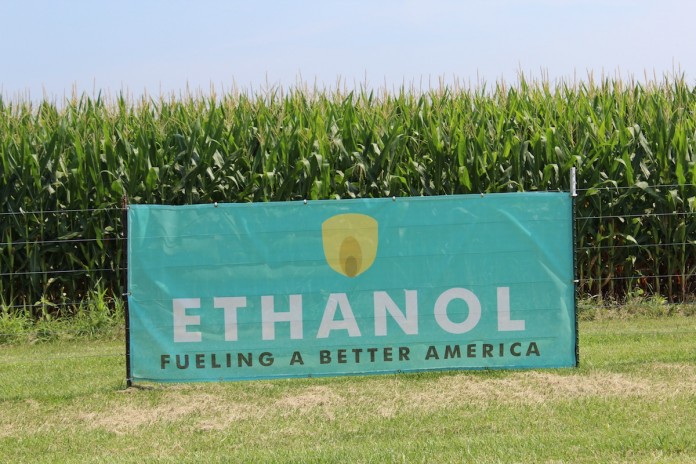Fuel prices have skyrocketed across the U.S. this year. Some farm groups and state officials are seeking loosened regulations on higher blends of ethanol to help alleviate the pressure and create more opportunities for farmers.
At the same time, the U.S. Environmental Protection Agency released a final rule for the Renewable Fuel Standard June 3 that sets a goal of 15 billion gallons of conventional renewable fuels for 2022.
Farm groups including the American Farm Bureau Federation, American Soybean Association and National Corn Growers Association, and renewable fuel industry groups have applauded the final rule, with some groups saying it will help lower fuel costs for consumers.
“More ethanol in the fuel supply saves Americans money at the pump and lowers greenhouse gas emissions,” said Chris Edgington, president of the National Corn Growers Association, in a June 3 statement. “Higher renewable fuel volumes for this year, which will increase and diversify our fuel supply, come at a crucial time as policymakers are working to lower fuel prices.”
Renewable fuel standard
The Renewable Fuel Standard program requires the U.S. fuel industry to include a certain amount of renewable fuels into its supply. The 2022 volume obligations are 15 billion gallons of renewable fuel and 5.63 billion gallons of advanced biofuels.
The EPA included an additional 250 million gallons for 2022, to address a court order that said it incorrectly reduced volume obligations in 2016. It said it will do the same for 2023. The final rule also rejected 69 pending requests for exemptions for small refineries.
The EPA and several groups that advocate for renewable fuels said this final rule puts the program back on track, and would support sales of higher blends of ethanol. Most gasoline sold in the U.S. is blended with 10% ethanol.
Costs
Some in the fuel industry have argued the new volume mandates could push prices even higher, because of the cost of blending renewable fuels.
“Pushing aggressive biofuel blending mandates risks exacerbating current market challenges by placing additional pressures and restrictions on refiners and blenders,” said Ron Chittim, vice president of downstream policy for the American Petroleum Institute, in a statement.
The organization, which represents the oil and gas industry, said the final volumes for 2022 are more than the market can absorb, even based on the U.S. EPA’s own estimates. But renewable fuel advocates say it will help the U.S. be less dependent on foreign sources of fuel and cut down prices for consumers.
A 2019 analysis by the U.S. Government Accountability Office said the program is connected to increases in costs outside of the Midwest, but those price increases may have decreased over time. The analysis also said places closer to where ethanol is produced, like many Midwestern states, tend to see lower gas prices at the retail level under the mandate.
E15
Some Midwestern states are turning to higher blends of ethanol in hopes it will help them respond to rising fuel costs. Ohio Gov. Mike DeWine wrote a letter to U.S. EPA Administrator Michael Regan June 10 asking the EPA to change regulations that limit sales of gasoline mixed with 15% ethanol in the summer.
The EPA in 2019 expanded E15 sales, which were prohibited in the summer under the Clean Air Act, to be year-round, by extending a waiver that applies to E10 sales to apply to E15 sales. A federal appeals court overturned that decision in 2021, saying the EPA overstepped its authority.
The EPA used its emergency waiver authority to allow E15 sales this summer, as fuel prices went up. But DeWine asked the EPA to take action to permanently allow E15 sales year-round.
“E15 offers Ohio consumers cleaner emissions, more fuel from renewable sources and, perhaps most critically, a less expensive fuel option,” DeWine said in a June 10 press release. “By permanently removing unneeded summertime E15 regulations, we can encourage more Ohio gas stations to offer E15 and give Ohioans an option that provides real gas price relief.”
The Ohio Farm Bureau Federation and Ohio Corn and Wheat Growers Association both supported the suggestion.
“Governor DeWine’s request to allow sales of E15 year-round will continue to save consumers money at the pump when budgets are being stretched thin, all while reducing our country’s dependence on foreign crude oil, increasing farm incomes during these challenging times and providing good-paying jobs in rural Ohio and America,” said Adam Sharp, Ohio Farm Bureau executive vice president, in a June 10 statement.
This request also makes Ohio one of nine Midwestern states seeking permanent year-round sales for E15. The Renewable Fuels Association said these nine states represent 14% of the nation’s gasoline consumption, and are home to 59% of the U.S. retail stations selling E15 and about 75% of the nation’s ethanol biorefineries.












